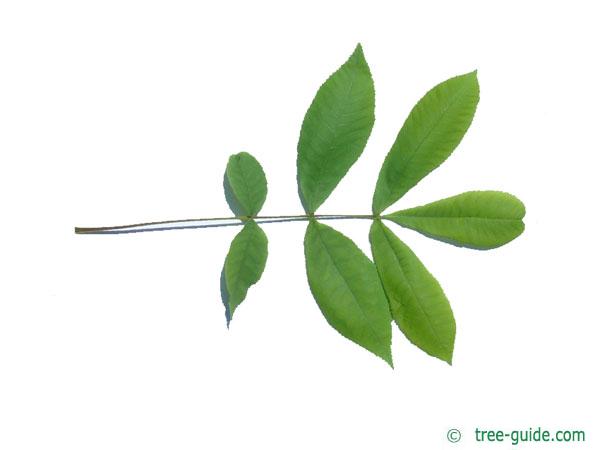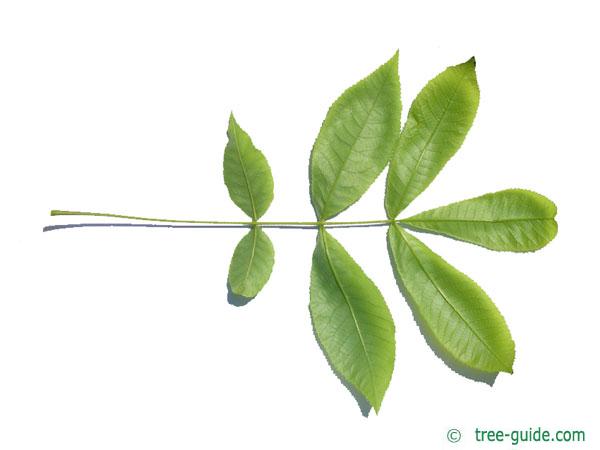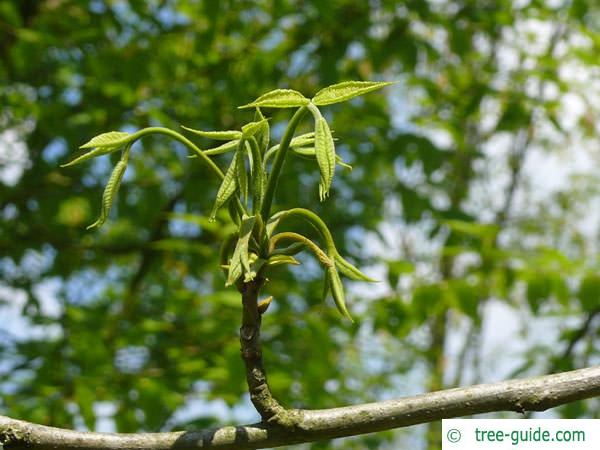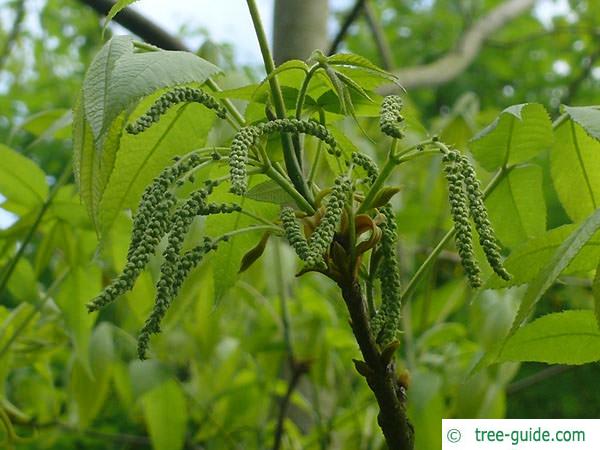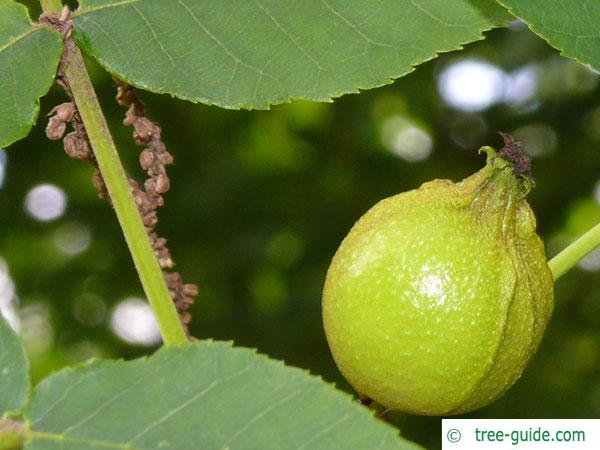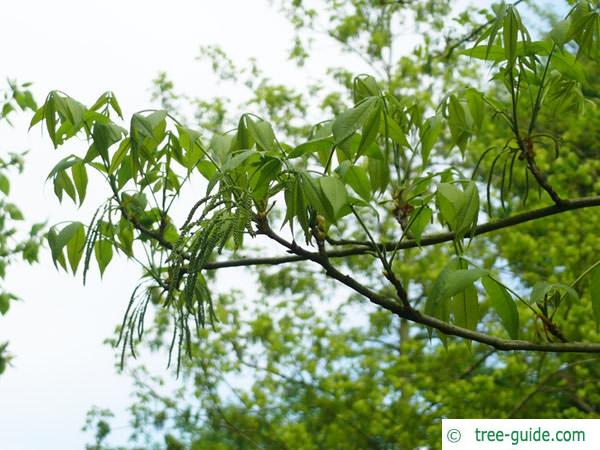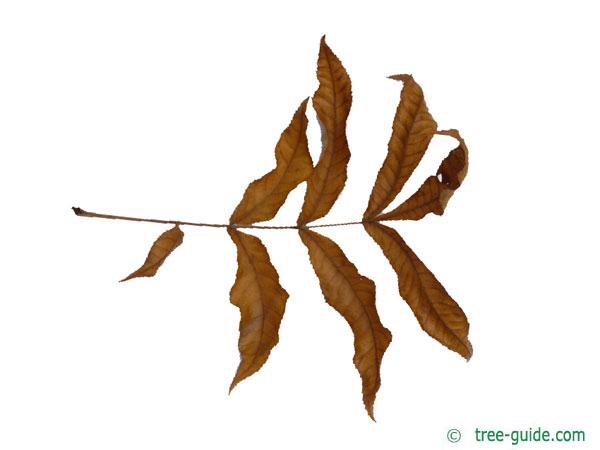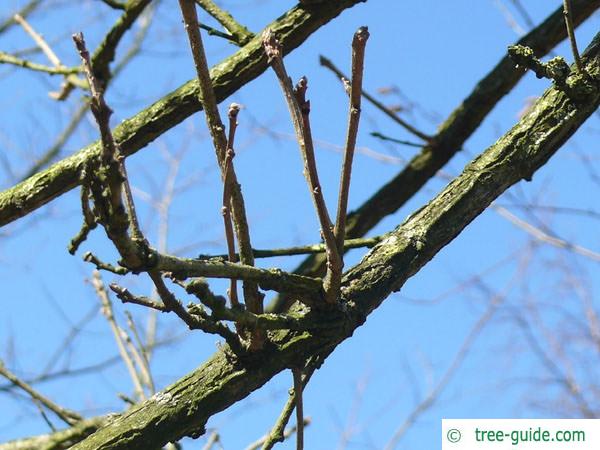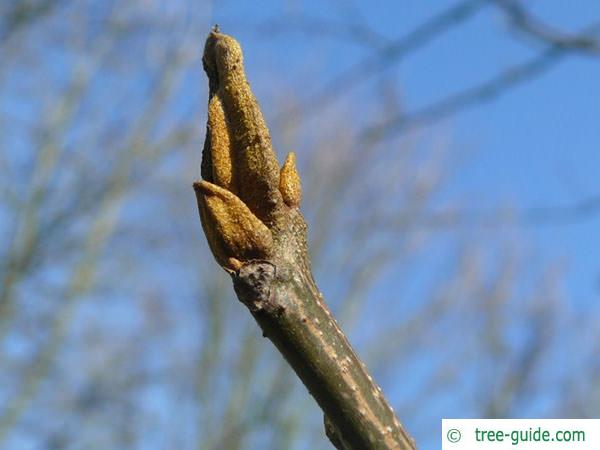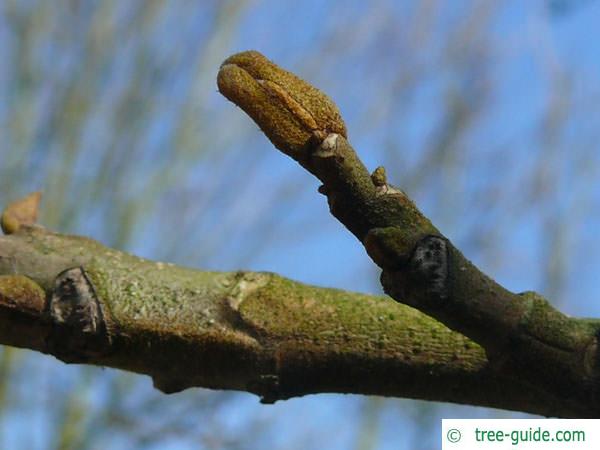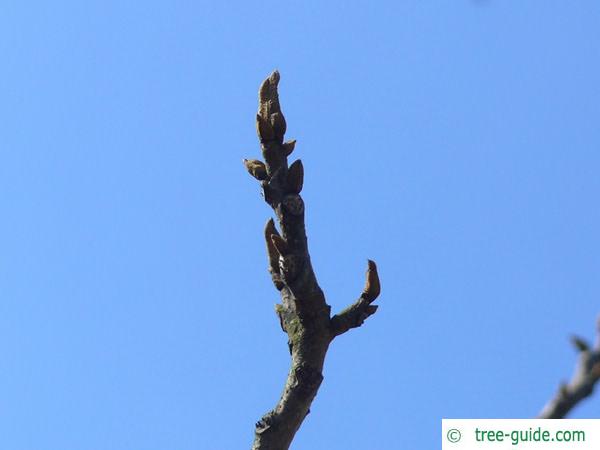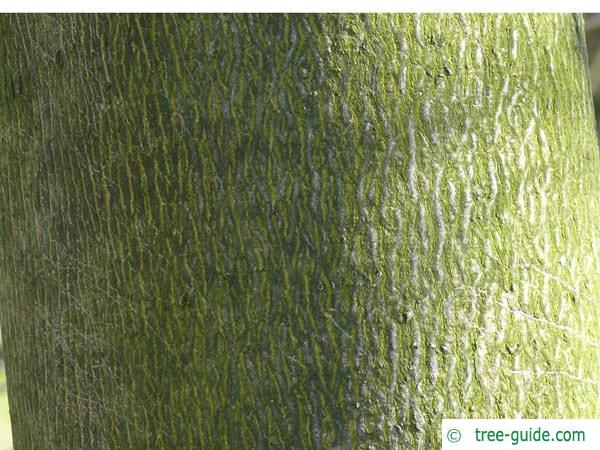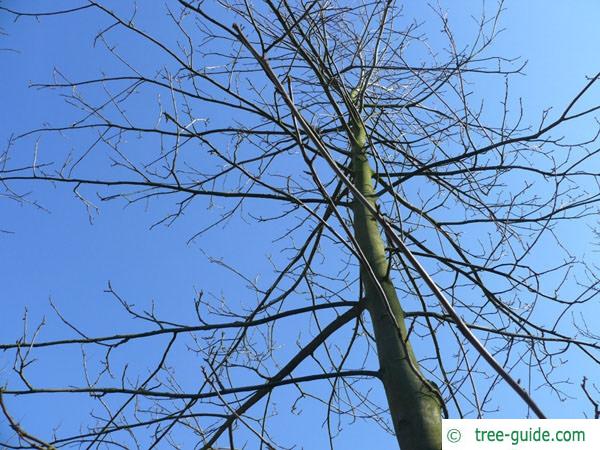Basisdaten
The Bitternut is common from the center to the coast of North America. It becomes rarely more than 200 years old. The wood is hard and is used for the furniture industry. The Indians used the wood for making bows also. The nuts are not edible.
Tree profile
The leaves of Bitternut are 30 cm long, odd pinnate, up to 17 cm (6.7 in) long with 7 -11 lanceolate leaflets. The leaf margin is serrated.
The flowers are small green-yellow catkins.
The nuts are in a nutshell. The nut is large up to 3 cm (1.2 in). The nut has a bitter taste.
The branches are first brown and hairy, later smooth and gray. The buds are yellowish with glandular scales.
single tree
Carya additional information
overview leaves | overview fruit | overview trunkoverview winter | overview trees







